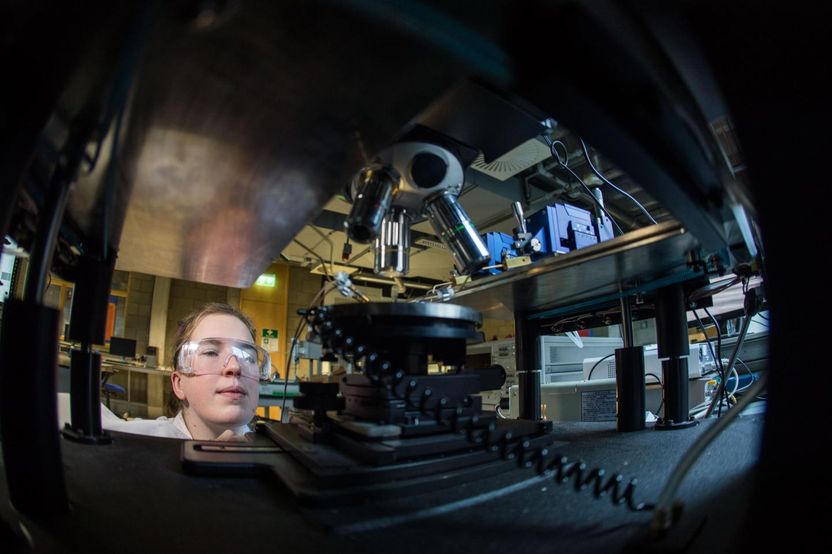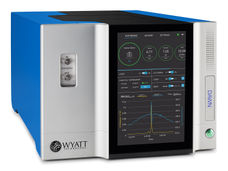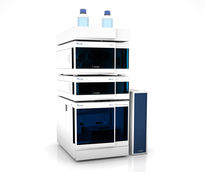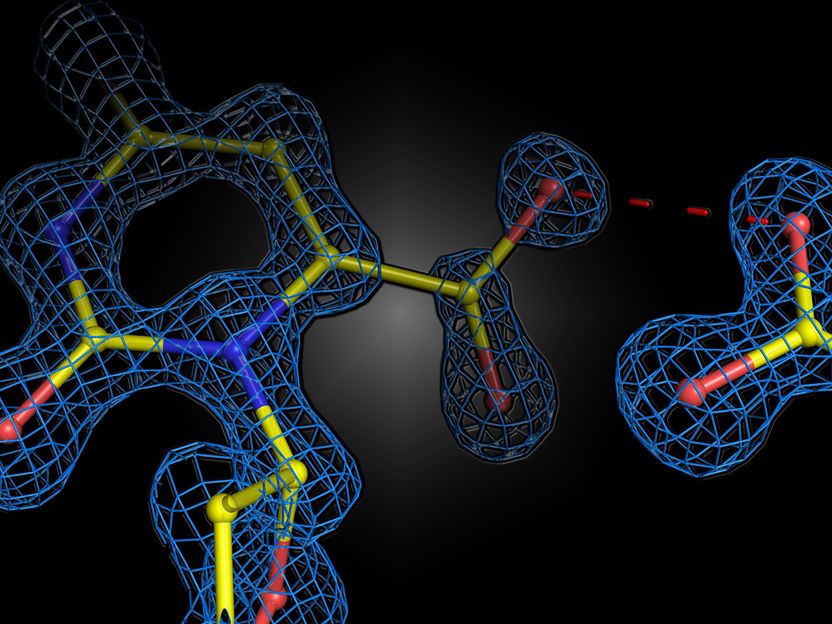Squeezing low-cost electricity from sustainable biomaterial
Mobile phone speakers and motion detectors in cars and video games may soon be powered by electricity generated from low cost and sustainable biomaterials, according to research carried out at University of Limerick (UL), Ireland.

Mobile phone speakers and motion detectors in cars and video games may soon be powered by electricity generated from low cost and sustainable biomaterials, according to research carried out at University of Limerick (UL), Ireland. Scientists at UL's Bernal Institute have discovered that the biomolecule glycine, when tapped or squeezed, can generate enough electricity to power electrical devices in an economically viable and environmentally sustainable way. The research was published on Dec. 4, 2017 in leading international journal Nature Materials. Pictured is Sarah Guerin, Science Foundation Ireland funded post-graduate researcher at the Bernal Institute, UL.
Sean Curtin True Media
Scientists at UL's Bernal Institute have discovered that the biomolecule glycine, when tapped or squeezed, can generate enough electricity to power electrical devices in an economically viable and environmentally sustainable way.
Glycine is the simplest amino acid. It occurs in practically all agro and forestry residues. It can be produced at less than one per cent of the cost of currently used piezoelectric materials.
Piezoelectric materials generate electricity in response to pressure, and vice versa. They are widely used in cars, phones, and remote controls for games consoles. Unlike glycine, these materials are normally synthetic and often contain toxic elements such as lead or lithium.
"It is really exciting that such a tiny molecule can generate so much electricity," said lead author Sarah Guerin, a post-graduate student at the Department of Physics and the Bernal Institute, UL.
"We used computer models to predict the electrical response of a wide range of crystals and the glycine number was off the charts. We then grew long, narrow crystals of glycine in alcohol," she added, "and we produced electricity just by tapping them."
Sarah's PhD supervisor Dr Damien Thompson, adds, "The predictive models we are developing can save years of trial-and-error lab work. The modelling data tells us what kinds of crystals to grow and where best to cut and press those crystals to generate electricity."
Co-author and Science Foundation Ireland (SFI) Centre for Medical Devices (CURAM) investigator Professor Tofail Syed said: "We also have a pending patent that translates our findings to applications such as biodegradable power generation, devices detecting diseases inside of the body and physiologically controlled drug pumps".
Previously, Bernal scientists discovered piezoelectricity in the globular protein lysozyme, found in tears, egg-white and saliva, and hydroxyapatite, a component of bone.
"The current finding extends the technology towards pragmatic, low-cost, renewable sources for electricity generation," according to Professor Luuk van der Wielen, Director of the Bernal Institute and Bernal Professor of Biosystems Engineering and Design. "The finding translates the earlier Bernal scientists' world-leading contribution in bio-piezoelectricity towards a large-scale and affordable application potential."
Professor Edmond Magner, Dean of Science and Engineering at UL, said: "UL's Department of Physics and Bernal Institute researchers continue to pioneer the use of biological crystals for electrical applications. This work places them at the forefront in the development of bio-piezoelectric devices".
Original publication
Sarah Guerin, Aimee Stapleton, Drahomir Chovan, Rabah Mouras, Matthew Gleeson, Cian McKeown, Mohamed Radzi Noor, Christophe Silien, Fernando M. F. Rhen, Andrei L. Kholkin, Ning Liu, Tewfik Soulimane, Syed A. M. Tofail & Damien Thompson; "Control of piezoelectricity in amino acids by supramolecular packing"; Nature Materials; 2017
Original publication
Sarah Guerin, Aimee Stapleton, Drahomir Chovan, Rabah Mouras, Matthew Gleeson, Cian McKeown, Mohamed Radzi Noor, Christophe Silien, Fernando M. F. Rhen, Andrei L. Kholkin, Ning Liu, Tewfik Soulimane, Syed A. M. Tofail & Damien Thompson; "Control of piezoelectricity in amino acids by supramolecular packing"; Nature Materials; 2017
Topics
Organizations
Other news from the department science
These products might interest you

DAWN® by Wyatt Technology
The instrument for Multi-Angle Light Scattering (MALS): The DAWN® from Wyatt Technology
The world's most advanced light scattering instrument for absolute characterization of macromolecules

AZURA Analytical HPLC by KNAUER
Maximize your analytical efficiency with customized HPLC system solutions
Let your application define your analytical system solution

Get the chemical industry in your inbox
By submitting this form you agree that LUMITOS AG will send you the newsletter(s) selected above by email. Your data will not be passed on to third parties. Your data will be stored and processed in accordance with our data protection regulations. LUMITOS may contact you by email for the purpose of advertising or market and opinion surveys. You can revoke your consent at any time without giving reasons to LUMITOS AG, Ernst-Augustin-Str. 2, 12489 Berlin, Germany or by e-mail at revoke@lumitos.com with effect for the future. In addition, each email contains a link to unsubscribe from the corresponding newsletter.
Most read news
More news from our other portals
Last viewed contents
Arnaldus_de_Villa_Nova
Aristides_Brezina

European Consortium Launches DELYCIOUS Research Project to Optimize Operation of Renewable Hydrogen Production Units



























































